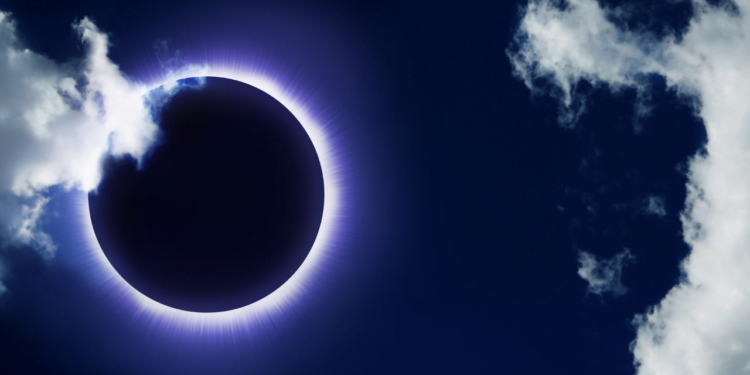No products in the cart.
Cultural Interpretations of the 2024 Solar Eclipse
This post contains affiliate links.
The 2024 solar eclipse, set to occur on April 8th, 2024, is a highly anticipated celestial event that will captivate the attention of people worldwide. As the moon passes between the Earth and the sun, casting its shadow across parts of North America, the cultural interpretations and perspectives on this phenomenon will be as diverse as the societies that witness it.
Spiritual Symbolism in Indigenous Cultures
For many indigenous cultures, solar eclipses hold deep spiritual significance. In some Native American traditions, the eclipse is seen as a sacred moment when the sun and moon engage in a celestial dance, representing the delicate balance between the universe’s masculine and feminine energies. For example, the Hopi people of the American Southwest believe that the eclipse symbolizes a time of introspection and renewal, a chance to reconnect with the land and their ancestral traditions.
Astrological Interpretations in the East
In Eastern cultures, the 2024 solar eclipse will be interpreted through the lens of astrology and its impact on cosmic energies. In Hinduism, solar eclipses are often associated with the demon Rahu’s temporary “swallowing” of the sun. This event is believed to have profound implications for individuals and society. Some Hindu practitioners may engage in purification rituals or refrain from certain activities during the eclipse to harness the transformative power of this celestial occurrence.
Astronomical Curiosity in the West
In the Western scientific tradition, the 2024 solar eclipse will be viewed primarily through an astronomical lens. Scientists, amateur astronomers, and the general public will eagerly observe the event, studying the various phenomena associated with the eclipse, such as the corona, solar prominences, and the darkening of the sky. The opportunity to witness a total solar eclipse, a rare occurrence in any given location, will captivate the curiosity of many and inspire a deeper appreciation for the wonders of the cosmos.
Artistic Expressions and Cultural Celebrations
The cultural diversity of the regions experiencing the 2024 solar eclipse will also be reflected in the event’s artistic expressions and cultural celebrations. In some communities, traditional dances, music, and storytelling may be used to commemorate the occasion, while in others, contemporary art installations or light displays may be created to honor the celestial phenomenon. These cultural celebrations reflect the unique perspectives of each society and serve as a means of collective engagement and a shared experience of the natural world.
Adapting to the Challenges of the Eclipse
As the 2024 solar eclipse casts its shadow across North America, communities will need to adapt to the practical challenges presented by the event. This may include adjustments to transportation, communication systems, and even daily routines, as the temporary loss of sunlight can significantly impact the normal flow of human activity. By understanding and preparing for these challenges, communities can ensure that the 2024 solar eclipse is experienced with a sense of wonder and awe rather than disruption.
The 2024 solar eclipse will be a profound and multifaceted event, with each culture and society interpreting and responding uniquely. From the spiritual symbolism of indigenous traditions to the astronomical curiosity of the West, the diverse perspectives on this celestial occurrence will serve as a testament to the richness and complexity of the human experience.
Societal Responses to Celestial Events Across the Globe
Celestial events, such as eclipses, comets, and meteor showers, have captivated human imagination for millennia. However, how these events are perceived and interpreted can vary significantly across cultural and societal contexts. From ancient beliefs and superstitions to modern scientific understanding, the responses to celestial phenomena offer a fascinating glimpse into the diversity of human experiences.
Cultural Perspectives on Solar Eclipses
Solar eclipses have long been the subject of intense fascination and diverse interpretations. In many ancient civilizations, these awe-inspiring events were often seen as omens or portents of significant events to come. The Mayans, for example, believed that solar eclipses were caused by a celestial jaguar consuming the sun, and they would engage in elaborate rituals and sacrifices to appease the gods and ensure the sun’s safe return.
Similarly, in ancient China, solar eclipses were believed to be the work of a celestial dragon or serpent, and the emperor would lead his subjects in rituals and ceremonies to ward off the perceived threat. On the other hand, the Inuit peoples of the Arctic regions viewed solar eclipses as a time when the sun was “resting” or “sleeping,” they would engage in quiet contemplation and storytelling during these events.
Astronomical Perspectives on Celestial Phenomena
In contrast to these more mystical interpretations, modern societies have developed a more scientific understanding of celestial events. Advances in astronomy and astrophysics have allowed us to accurately predict and explain the mechanics behind phenomena like solar and lunar eclipses, comets, and meteor showers.
Scientists now understand these events as the result of the complex interplay of celestial bodies and the natural laws that govern the universe. This scientific perspective has led to a deeper appreciation and understanding of these events and the development of sophisticated technologies for observing and studying them.
The Interplay of Culture and Science
Despite the increasing dominance of scientific explanations, many traditional cultural beliefs and practices surrounding celestial events continue to thrive. In some communities, these ancient traditions coexist harmoniously with modern scientific knowledge, with people often drawing upon both perspectives to make sense of the natural world.
For example, in parts of India, solar eclipses are still seen as a time of spiritual importance, with people engaging in fasting, prayer, and other rituals. At the same time, these communities recognize the astronomical explanations for eclipses and often incorporate cultural and scientific perspectives into their understanding of these events.
The Universality of Human Wonder
Ultimately, the diverse responses to celestial events across the globe serve as a testament to the universal human capacity for wonder and awe in the face of the natural world. Whether through the lens of ancient beliefs or modern science, these celestial phenomena continue to inspire and captivate us, reminding us of our place in our vast and complex universe.
As we continue to explore and understand the cosmos, it is important to recognize and celebrate the rich tapestry of cultural perspectives that have shaped our understanding of the heavens. By embracing this diversity, we can gain a deeper appreciation for the multifaceted nature of human experience and the enduring power of the natural world to inspire and unite us.
Final Thoughts
This post contains affiliate links.













